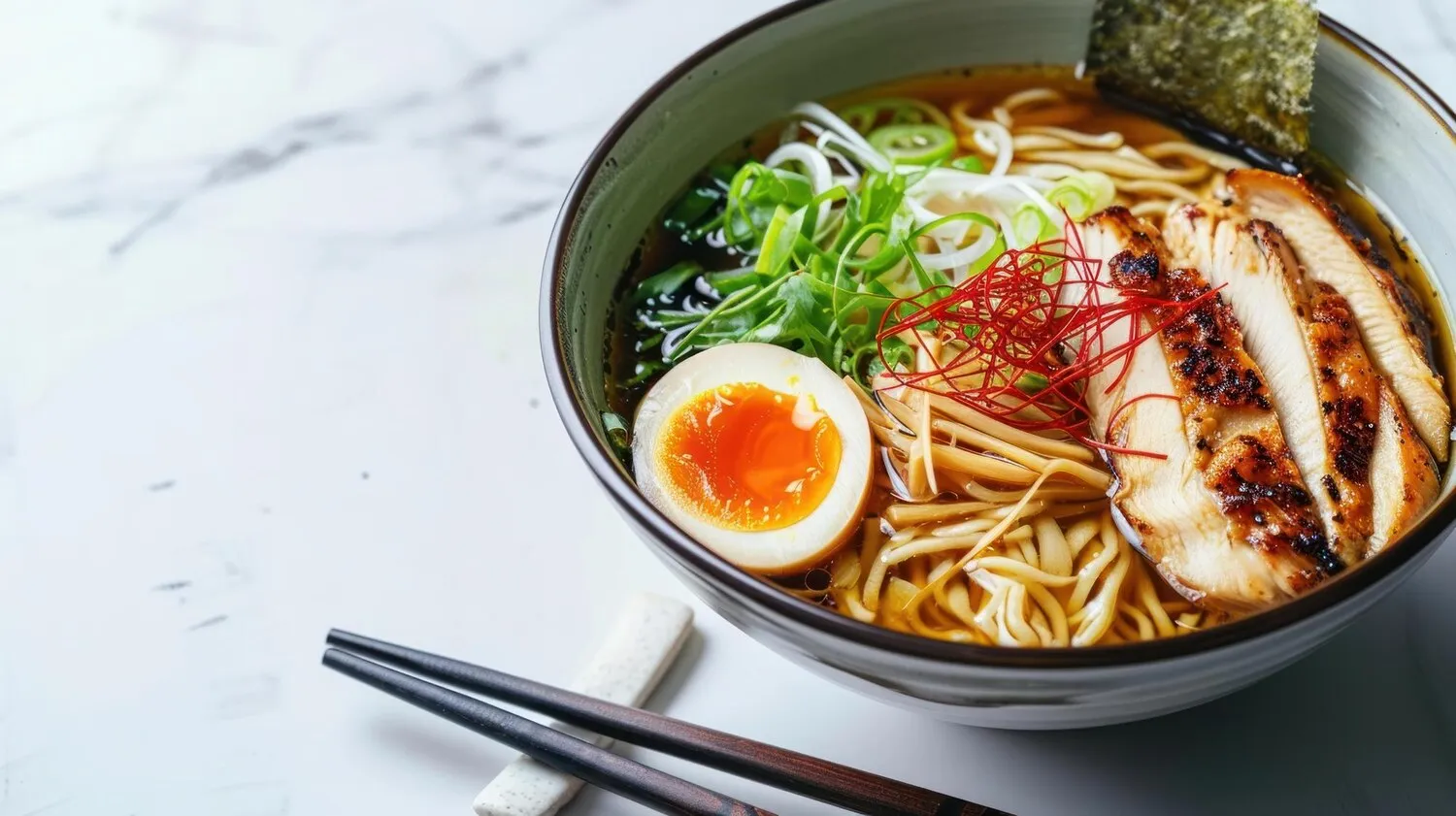
Pho Bo
Vietnamese noodle soup with beef.
Nutrition Facts
* The % Daily Value (DV) tells you how much a nutrient in a serving of food contributes to a daily diet. 2,000 calories a day is used for general nutrition advice.
Pho's origins are debated, with French colonial influence and the need for affordable, nourishing food for the working class in the early 20th century playing significant roles. Some believe it evolved from a similar Chinese noodle soup, while others emphasize its purely Vietnamese creation. The word 'pho' is possibly derived from the French 'pot-au-feu'.
Pho Bo is more than just a dish; it's a national symbol of Vietnam, representing comfort, community, and culinary heritage. It's commonly enjoyed for breakfast, lunch, or dinner and is deeply ingrained in Vietnamese daily life.
Breakfast Staple
Pho is a very common breakfast food in Vietnam, often enjoyed before starting the day. Street vendors and restaurants alike are bustling with activity early in the morning.
Family Tradition
Making pho from scratch is often a family tradition, with recipes passed down through generations. Each family may have its unique twist on the broth and spice blend.
Regional Variations
While Pho Bo is the most common variety, regional variations exist throughout Vietnam. For instance, southern-style pho tends to be sweeter and richer, while northern-style pho is often simpler and cleaner.
Social Gathering
Pho is often enjoyed with friends and family, fostering a sense of community and connection. It's a popular choice for informal gatherings and celebrations.
Pho Bo is defined by its rich, aromatic broth, delicate rice noodles, and tender slices of beef. The balance of savory, sweet, and herbaceous notes creates a complex and satisfying flavor profile.
The broth is traditionally made by simmering beef bones, oxtail, and charred aromatics like ginger and onion for several hours. Spices like star anise, cinnamon, cloves, and cardamom contribute to its unique fragrance. Rice noodles ('banh pho') are flat and wide. Common beef cuts include rare steak ('tai'), well-done brisket ('chin'), and fatty brisket ('gau'). Fresh herbs like cilantro, Thai basil, and mint, along with bean sprouts, lime wedges, and chili peppers, are added as garnishes to customize the flavor.
Taste the Broth First
Before adding any garnishes, take a spoonful of the broth to appreciate its pure flavor.
Customize Your Bowl
Use the available garnishes (herbs, bean sprouts, lime, chili) to tailor the pho to your taste.
Add Sriracha and Hoisin
Many people add a swirl of sriracha and hoisin sauce to the broth for extra sweetness and spice. Experiment to find your preferred balance.
Don't Be Afraid to Slurp
Slurping the noodles is perfectly acceptable (and even encouraged) as it enhances the flavor and cools the broth slightly.
Use Chopsticks and Spoon
Use chopsticks to eat the noodles and meat, and a spoon to drink the broth. It's the traditional way to enjoy pho.
Explore additional Soup, Noodles dishes and restaurants
Explore Soup, NoodlesDiscover top dining spots and culinary experiences in Luzern.
Explore LuzernLearn more about the food culture, restaurant scene, and culinary heritage of Switzerland.
Explore Switzerland